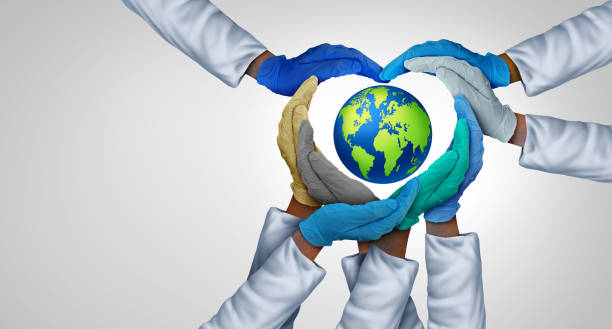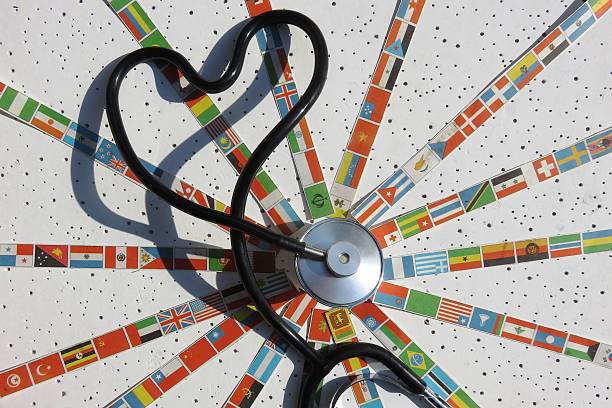A Collaborative Effort for a Healthier World: Exploring Global Health Initiatives
In today's interconnected world, the concept of health transcends national borders. Infectious diseases can spread rapidly across continents, and disparities in healthcare systems leave entire populations vulnerable. Global Health Initiatives (GHIs) emerged as a response to these challenges, playing a crucial role in improving health outcomes for people in low- and middle-income countries (LMICs). This article delves deep into the world of GHIs, exploring their purpose, key actors, areas of focus, their impact on global health, and the challenges that lie ahead.
The Need for Global Health Initiatives
GHIs are a collaborative effort by various stakeholders, including governments, international organizations, philanthropic foundations, and non-governmental organizations (NGOs). They work together to raise and distribute funds, strengthen health systems in LMICs, and tackle major health challenges that disproportionately affect these regions.
Here's a closer look at the driving forces behind GHIs:
- Equity and Access: One of the core goals of GHIs is to bridge the healthcare gap between developed and developing countries. They strive to ensure equitable access to essential medical services and interventions for all, regardless of location or socioeconomic status.
- Collective Action: Global health threats require a coordinated response. GHIs bring together resources and expertise from various actors to address complex issues like pandemics, emerging infectious diseases, or neglected tropical diseases.
- Strengthening Health Systems: Beyond short-term interventions, GHIs invest in building robust health systems in LMICs. This includes training healthcare workers, equipping health facilities with essential supplies and infrastructure, and establishing sustainable mechanisms for long-term health improvements.
Key Players in the Global Health Arena
The success of GHIs hinges on the collaboration of a diverse range of actors:
- National Governments: Both governments of developed and developing countries play a central role. Developed countries contribute funding and expertise to global health efforts, while LMIC governments implement programs and ensure national ownership of the initiatives.
- International Organizations: The World Health Organization (WHO) serves as the leading coordinator of global health efforts. It sets international health regulations, provides technical assistance to countries, and promotes research and development for essential health interventions. Other international organizations like UNICEF, UNAIDS, and the Global Fund play crucial roles in specific health areas.
- Philanthropic Foundations: Private foundations like the Bill & Melinda Gates Foundation and Wellcome Trust contribute substantial funding for specific health priorities, research and development of new drugs and vaccines, and innovation in healthcare delivery.
- Non-Governmental Organizations (NGOs): NGOs are the boots on the ground in LMICs. They deliver essential healthcare services, conduct community education programs to promote healthy behaviors, and advocate for health equity on behalf of marginalized populations.
Areas of Focus for Global Health Initiatives
GHIs address an extensive range of health issues, with a particular focus on areas where the need is the greatest and the impact can be significant. Here are some core areas:
- Communicable Diseases: GHIs prioritize tackling infectious diseases like HIV/AIDS, tuberculosis, malaria, and neglected tropical diseases (NTDs) like Chagas disease and lymphatic filariasis. This involves funding large-scale vaccination campaigns, development and distribution of essential medications, and strengthening surveillance systems for early detection and outbreak control.
- Maternal and Child Health (MCH): Reducing maternal and infant mortality rates remains a critical focus. GHIs support programs promoting prenatal care, skilled birth attendance, access to essential newborn and child health services, and vaccinations. They also address issues like malnutrition and female genital mutilation (FGM), which disproportionately impact women and girls in LMICs.
- Non-Communicable Diseases (NCDs): The rise of NCDs like diabetes, heart disease, and cancer poses a growing threat in LMICs. GHIs promote public health initiatives to address risk factors like unhealthy diets, tobacco use, and physical inactivity. They also support programs for early detection, treatment, and management of NCDs.
- Health System Strengthening: Building strong health systems in LMICs is crucial for long-term health improvements. GHIs support initiatives to train healthcare workers at all levels, equip health facilities with essential supplies and equipment, strengthen data collection and surveillance systems, and improve access to essential medicines and diagnostics.
The Impact of Global Health Initiatives: Success Stories
GHIs have demonstrably improved global health outcomes:
- Reduced Disease Burden: Global vaccination campaigns initiated and funded by GHIs have significantly reduced deaths from childhood diseases like measles, polio, and diphtheria. HIV/AIDS treatment programs, supported by GHIs, have extended life expectancy in many countries with high HIV prevalence.
- Strengthened Health Systems: GHIs have contributed to training millions of healthcare workers in LMICs, leading to improved access to essential services in previously underserved communities. This has resulted in a significant increase in the number of women delivering babies with skilled birth attendants and a rise in childhood immunization rates.
- Innovation and Research: GHIs support research and development of new drugs, vaccines, and diagnostics specifically tailored to the needs of LMICs. For example, the development of artemisinin-combination therapies (ACTs) for malaria and new point-of-care diagnostic tests have significantly improved malaria control efforts.
- Improved Maternal and Child Health Outcomes: Through a combination of interventions promoting prenatal care, skilled birth attendance, essential newborn and child health services, and vaccinations, GHIs have contributed to a decline in maternal and infant mortality rates in many LMICs.
Challenges and the Road Ahead
Despite the significant progress made by GHIs, several challenges remain:
- Sustainable Funding: Ensuring long-term and predictable funding for GHIs is crucial. Fluctuations in donor support can disrupt programs and slow down progress. Innovative financing mechanisms, such as public-private partnerships and social impact bonds, are being explored to address this challenge.
- National Ownership and Capacity Building: For long-term sustainability, fostering national ownership of health programs in LMICs is essential. GHIs need to work collaboratively with LMIC governments to strengthen their capacity to plan, implement, and manage health programs effectively.
- Accountability and Transparency: Transparency and accountability in how funds are used are critical to maintain trust and ensure resources reach those who need them most. Strengthening monitoring and evaluation systems, and fostering open communication with stakeholders, are key aspects of addressing this challenge.
- Emerging Threats: The rise of new infectious diseases, antimicrobial resistance, and the ever-changing climate landscape present new challenges. GHIs need to be adaptable and proactive in their approach to respond effectively to these emerging threats.
Conclusion: A Collaborative Effort for a Healthier World
Global Health Initiatives represent a powerful force for good in the world. By bringing together governments, international organizations, philanthropic foundations, and NGOs, GHIs have played a crucial role in tackling major health challenges, improving health outcomes in LMICs, and promoting global health equity.
However, the journey towards a healthier world is an ongoing process. Addressing the challenges of sustainable funding, national ownership, accountability, and emerging threats requires continued collaboration and innovation. As we move forward, a collective commitment from all stakeholders is essential to ensure that everyone, everywhere, has the opportunity to live a healthy life.
Here are some additional points to consider:
- The Role of Technology: Technological advancements have the potential to revolutionize healthcare delivery in LMICs. GHIs can play a role in promoting the use of telemedicine, mobile health technologies, and data analytics to improve access to care and enhance service delivery.
- The Importance of Social Determinants of Health: GHIs need to recognize the critical role that social determinants of health, such as poverty, education, and gender inequality, play in overall health outcomes. Addressing these factors alongside specific health interventions is crucial for achieving sustainable health improvements.
- Community Engagement: Successful health programs require active participation from the communities they serve. GHIs should prioritize community engagement strategies to ensure interventions are culturally appropriate, address local needs, and promote ownership and sustainability.
By fostering a collaborative spirit, harnessing the power of innovation, and addressing the remaining challenges, Global Health Initiatives can continue to pave the way for a healthier and more equitable world for all.







































